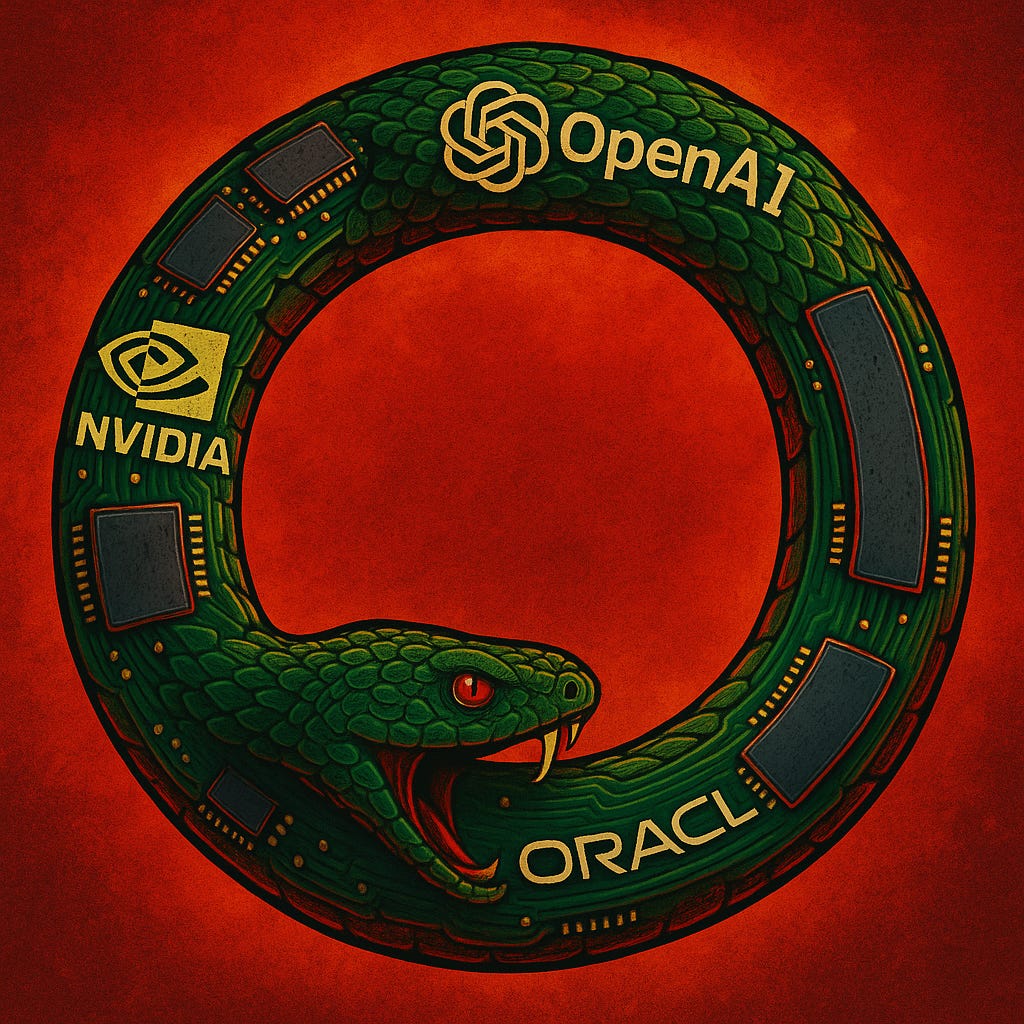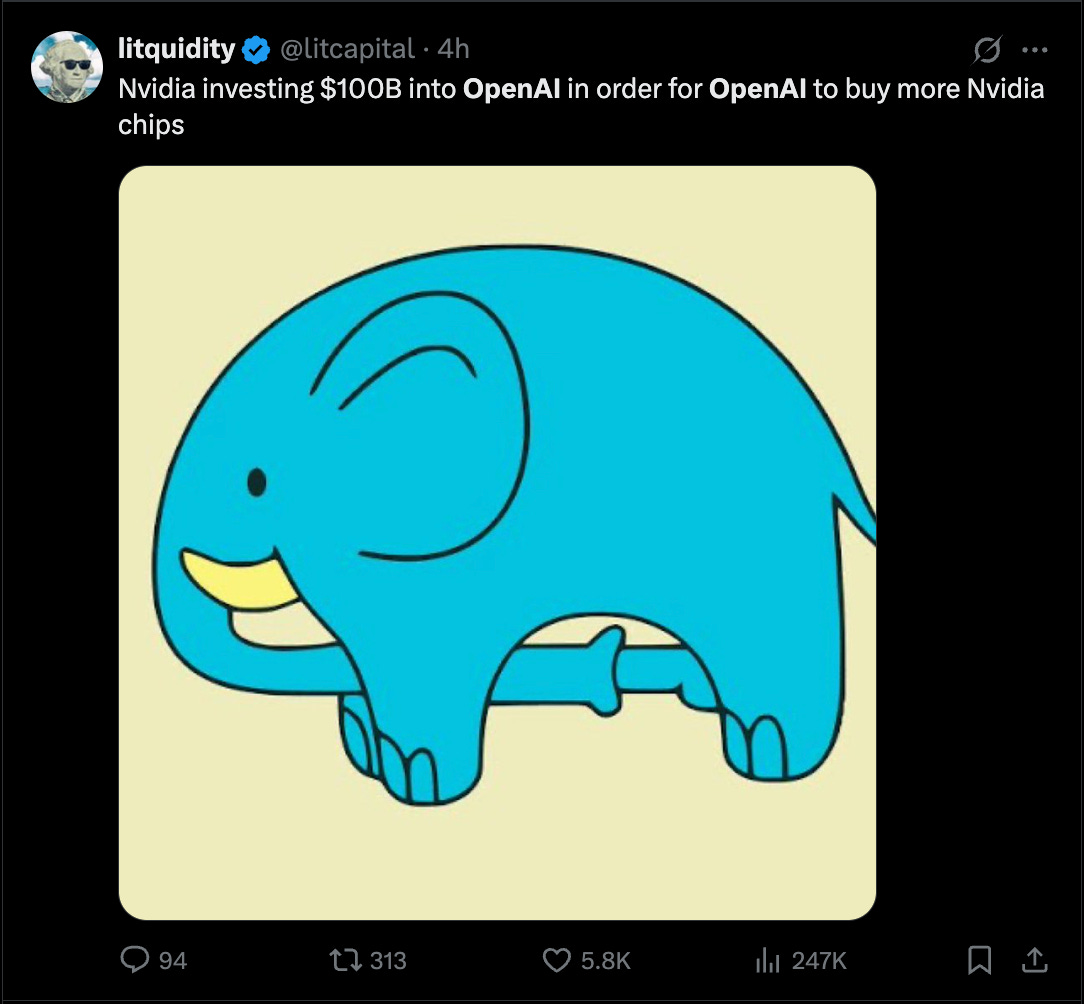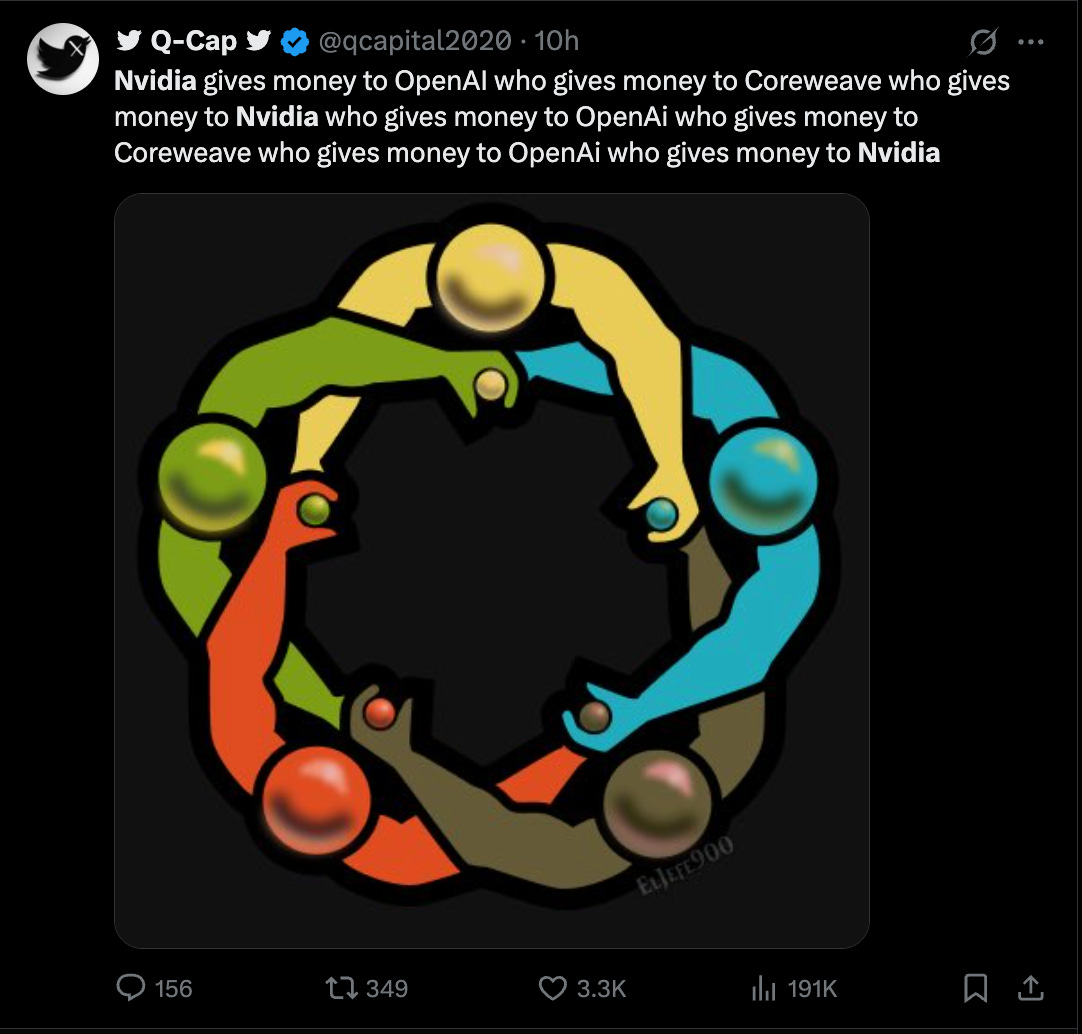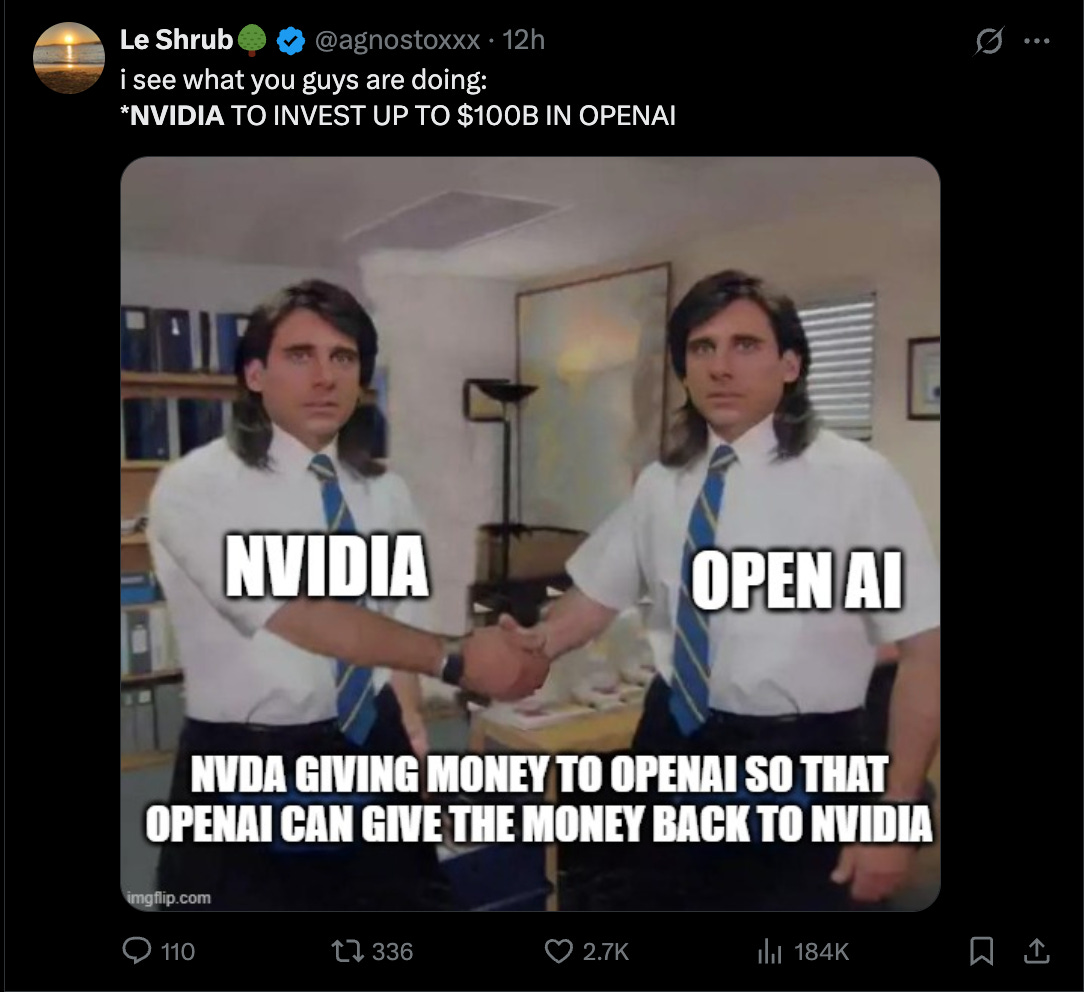Nvidia, OpenAI, and the Magic Money Loop
The billion-dollar snake eating its own silicon tail
The headlines had it backwards yesterday. The main story isn’t that Nvidia may invest up to $100B in OpenAI. The real headline is what that money underwrites: a plan to deploy 10 gigawatts of Nvidia systems for OpenAI’s infra.
To put that in perspective: 10GW is almost half of all utility-scale electricity generation added in the U.S. in the first half of this year. Or, if you prefer, the equivalent of 10 nuclear power plants - all devoted to AI.
That scale translates to about 4-5 million GPUs. Which is basically Nvidia’s entire output for this year, and double last year’s shipments. Jensen Huang called the partnership “monumental in size,” which is correct both literally and financially.
The deal is structured like this: Nvidia invests $10B for every 1GW of data center capacity OpenAI builds, up to $100B for 10GW. Analysts crunched the numbers: for every $35B of GPUs OpenAI buys, Nvidia chips in $10B. In effect, OpenAI pays 71% in cash and 29% in equity. Nvidia is partly financing its own sales.
That answers one nagging question: how does OpenAI pay for its staggering infrastructure commitments? At least here, the supplier itself is writing the equity check.
The Ouroboros Economy
Naturally, the memes wrote themselves:
OpenAI pledges $300B to Oracle cloud.
Oracle buys a mountain of Nvidia GPUs.
Nvidia invests $100B into OpenAI.
OpenAI uses that money to pay Oracle… who pays Nvidia… who invests back in OpenAI.
It’s the financial ouroboros: money eating its own tail.
On the surface, this looks bubble-like. Capital sloshing between three giants, juicing each other’s valuations. It recalls dot-coms selling banner ads to each other, or SoftBank’s Vision Fund pouring billions into startups whose ad spend boomeranged back into Google and Facebook. Narrative begets valuation, valuation begets capital, capital begets more narrative.
Railroads, Not Tulips
But dig deeper, and this isn’t just self-referential hype. Unlike the dot-com era, the loop is underwriting real steel, silicon, and energy. Nvidia’s chips are physical. Oracle’s data centers are being poured in concrete. OpenAI’s models are running queries for 700M people a week. These dollars don’t just bounce around balance sheets - they pour concrete, string fiber, and light up grids.
Which is why the right analogy isn’t tulips. It’s railroads. In the 19th century, investors funded track mileage far faster than freight justified. Stocks boomed, then crashed. But after the dust cleared, the rails remained - and a few players emerged as indispensable infrastructure.
The risk today isn’t that nothing gets built. It’s that too much does, too fast. Ten gigawatts of infrastructure can easily become stranded capacity if demand slows, regulation bites, or energy constraints hit. Multiples can deflate even as usage grows.
The Flywheel
Capital overshoot is part of how transformative technologies get built. The ouroboros may look like a meme, but it’s also a flywheel: money → compute → models → demand → money. The question isn’t whether the loop makes sense. It’s who’s still standing once the snake stops eating.
The memes are funny but the strategy is dead serious.






As usual, love the insights you keep bringing with every post.